We put the GSX-S to the test on Aussie roads... Here's our 2015 Suzuki GSX-S1000 and GSX-S1000F review. Test by Jeff Ware Photography by Keith Muir
At the world launch in Spain early this year I had the opportunity to ride the GSX-S1000 but not the GSX-S1000F, so I’ve been eager to try the faired version ever since. I didn’t expect to be disappointed – and can I tell you? I definitely wasn’t.
Straight up, this is a great bike. Suzuki is right on the money with this one.
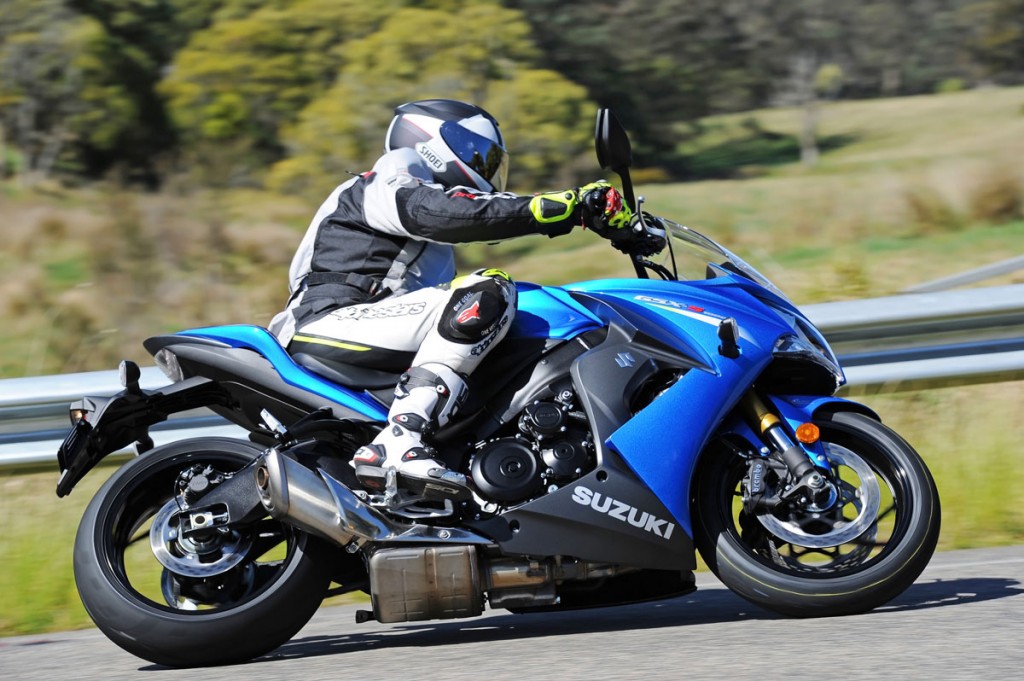
First of all there is the price. Suzuki has come in aggressively here and at $14,990 + ORC the GSX-S ($15,790 F), the bike is good value when compared to the rest of the class. With traction control and ABS the GSX-S out-specs the Kawasaki Z1000 ($16,799 + ORC), Yamaha FZ1N ($15,699 + ORC) and Triumph Speed Triple ($16,990 + ORC) yet comes in under all of them at the cash register.
The GSX doesn’t have the up-spec’d chassis running gear or electronics and power of the S 1000 R, Monster 1200, Aprilia Tuono or KTM Super Duke R but it is priced accordingly and there is plenty of room for personal customization and a few upgrades should you want to head that way.
I have a long term GSX-S1000 so stay tuned for a few upgrades there. At 40 I was not quite ready for a faired sports tourer but the F version is next on my list in a few years!
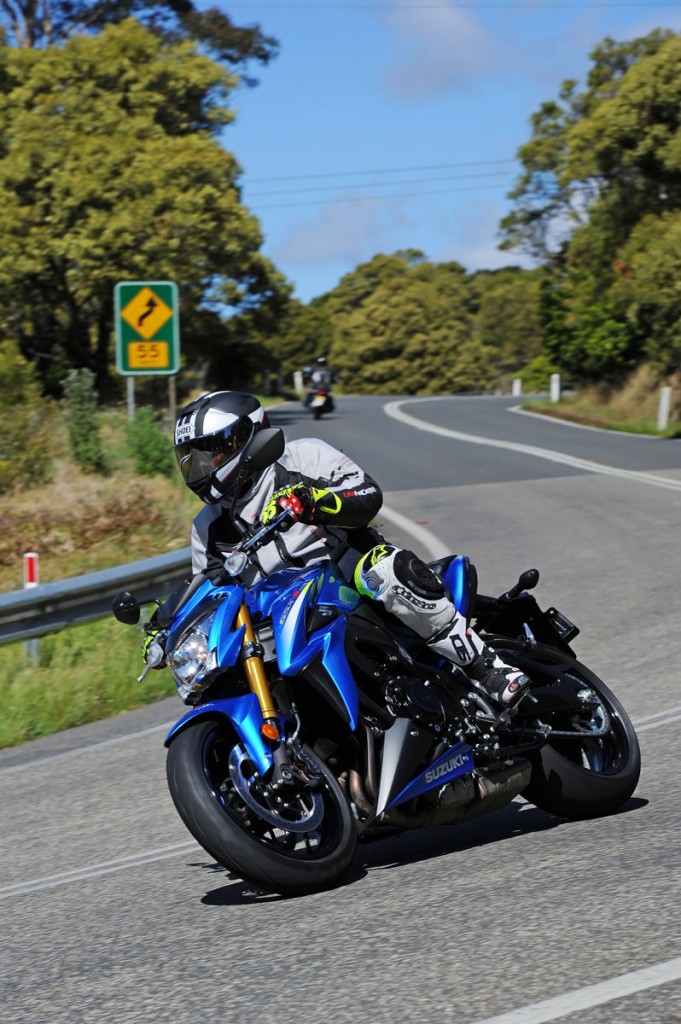
The GSX-S1000 and GSX-S1000F are almost identical in specification, the difference being the F weighs in at 5kg more (214kg) and although you won’t find it on the spec sheet data, has a more supported front end due to front fork internal specification.
The F has more fancy, adjustable mirrors as well. Everything else between the two bikes is the same, with the main hero being the mighty 73.4mm x 59mm bore x stroke Suzuki GSX-R1000K5 based engine – with revised cams, combustion chamber and airbox for more middle range and bottom end response.
We dyno ran our bike and got a respectable 144-rear-wheel-horsepower, which is around 15-horsepower less than the original K5 1000 up top. The engine character and tune is perfectly suited to both GSX-S versions and Suzuki have done well, even ensuring the exhaust note has that aggressive K5 rasp of old – 10-years on, this is still a fantastic engine.
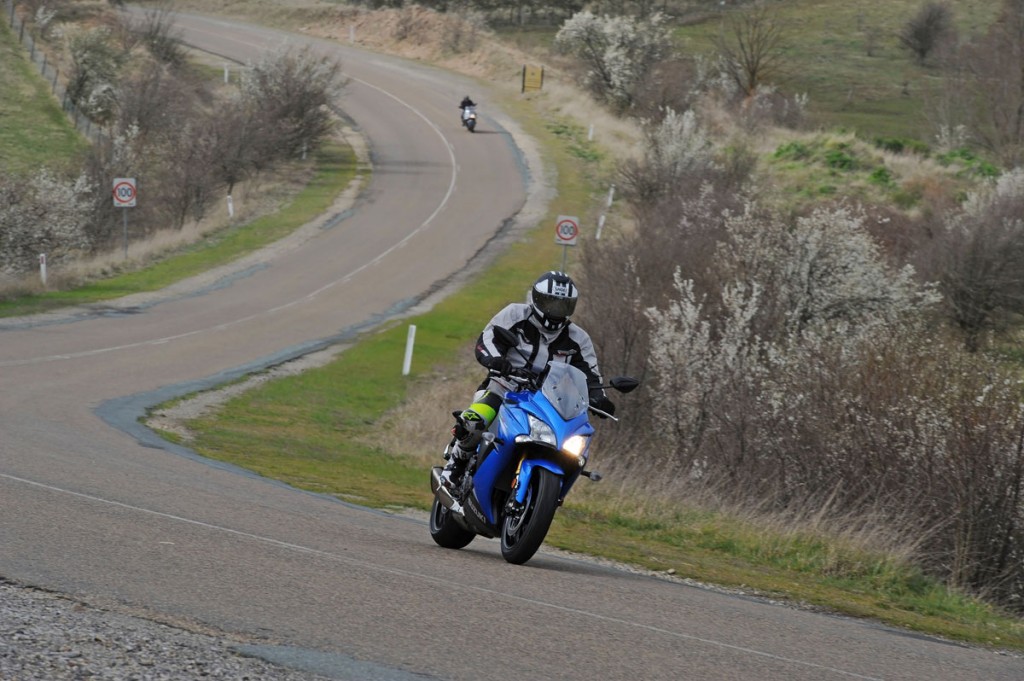 2015 Suzuki GSX-S1000 – The Ride
2015 Suzuki GSX-S1000 – The Ride
The GSX-S1000F doesn’t look as cool as its naked sibling. It looks responsible and the naked looks irresponsible. However, jump on and hit that start button and you soon forget about the styling. The F model’s fairing is small, unobtrusive but gives great protection.
The extra support on the front end and the more planted feel thanks to the extra kilograms over the front are immediately noticeable and the F feels better than the naked right away. I will be trying to find out the settings so I can set my GSX-S up the same way as the F.
This extra front-end confidence surprised me as the world launch bikes had fantastic front-end feel and support also, whereas the naked version here on our shores was not as confidence-inspiring and heavier steering. I suspect that after some feedback from the press on the front firmness at the world launch that Suzuki has altered the fork settings of the naked version.It will be an easy fix – probably as simple as fork oil height.
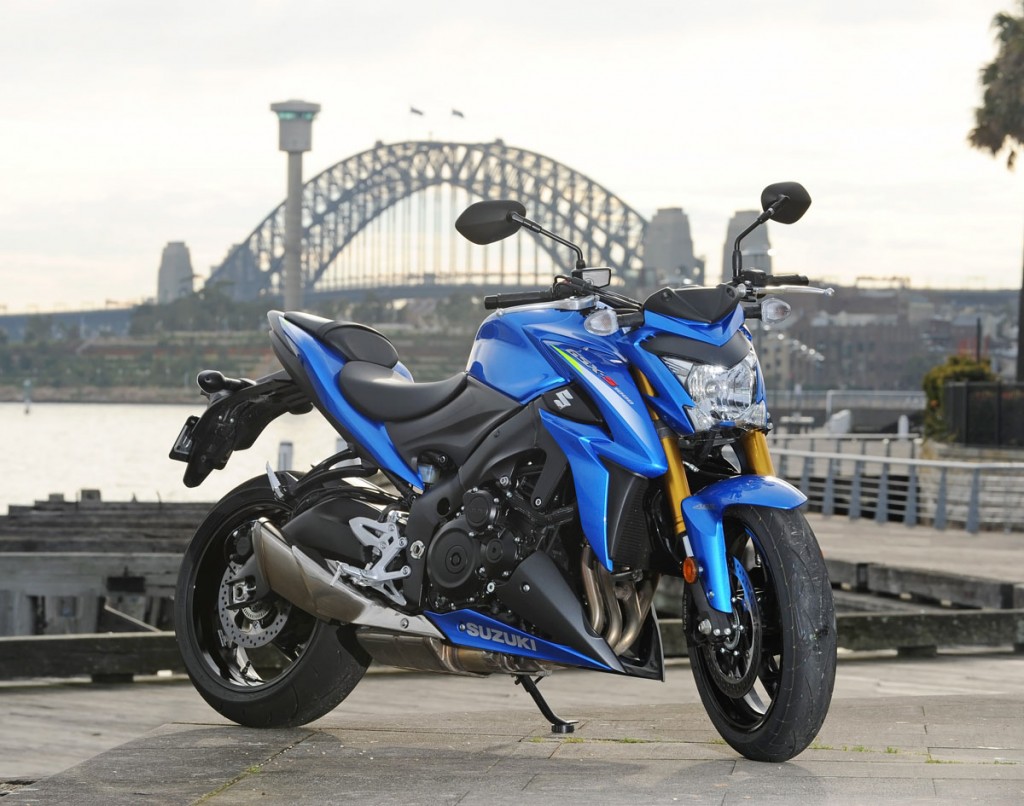
The biggest relief for me on the local bikes was that the throttle snatch experienced on the pre production world launch bikes was gone – thankfully! The throttle is still very aggressive on initial opening but you soon get used to it and it is not at all an on/off switch like it was at the world launch. Aside from these few things, the Aussie delivered bikes are just the same…
We had some wild conditions to test the GSX-S Down Under – warm and sunny for hard road charging through the twisties, freezing cold 0C gusty weather with sleet and heavy rain, high winds and roads that ranged from freeways to bumpy goat tracks to Phillip Island smooth winding roads. We had it all, with our lead rider Shawn Giles keen to get some payback to the journo’s for any negative race report comments over the years!
Having experienced the naked I spent the first half of the day on the F. Heading through peak hour traffic, southbound from Mascot to the Princess Highway, the GSX-S was faultless. It was smooth, comfortable, balanced and generally just an easy bike to ride. The seat is softer than the naked version, although there is no evidence of this on the spec data.
The mirrors are bigger and better and the fairing offers just the right level of protection around town. The gearbox, although a firm shift, is reasonably smooth but not as smooth as it was in the K5 for some reason. Clutch action is seamless and the throttle nice. I also like the basic dash layout and the upright riding position is pleasant, giving a good view of the traffic while utilizing the grunt to negotiate lane changes and traffic weaving. A good commuter.
On the more open freeway the GSX-F fairing came into play. I would like another 30mm or so, therefore would look for an aftermarket option, as my height, being average (183cm), meant my visor area was in the line of the airstream.
The engine is silky smooth but does rev – at 120km/h the tacho reads just under 5600rpm. However, first gear is tall – so rather than alternative final gearing the bike really does need lower first and second gear ratios and a taller overdrive sixth gear. Hopefully Suzuki does that on the next model. I didn’t notice it on the twisty Spanish roads back in March…
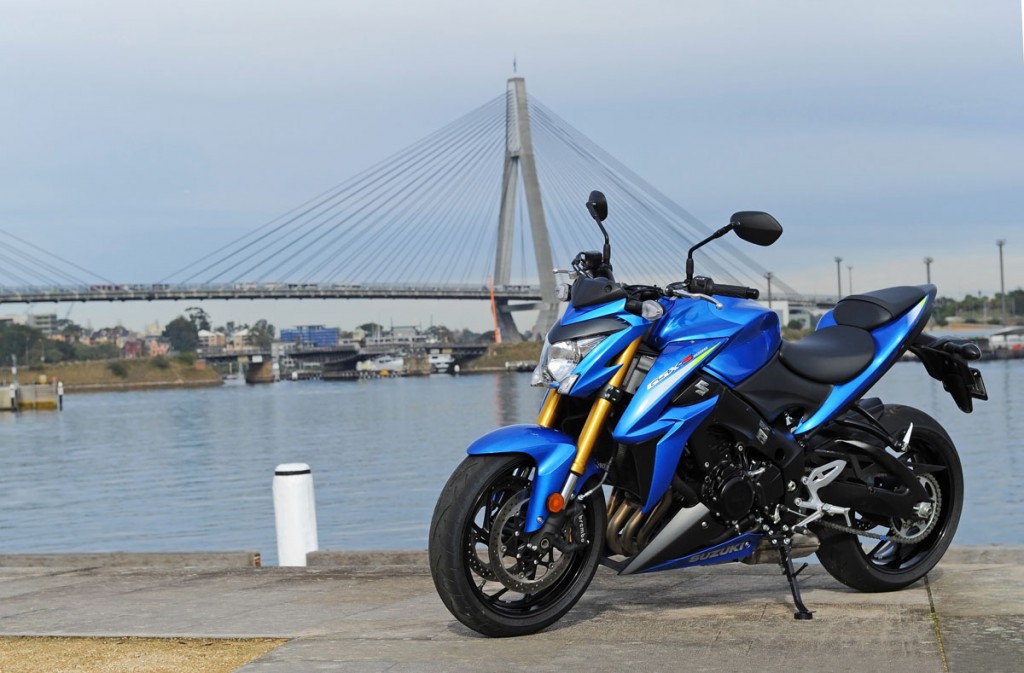 I will be lowering the final gearing on my GSX-S to give more in first and second, as I will not be doing that much freeway work on mine. As it stands, there are no vibrations in the ‘bars to speak of and the ride is really smooth. Despite a softer seat than the naked version, the F still gets a little firm and two-hours at a time in the saddle would be enough without a breather. Leg position and general riding stance is comfy, relaxed, upright yet gives you great control for sportier riding. Some span adjustment on the clutch lever would be good though.
I will be lowering the final gearing on my GSX-S to give more in first and second, as I will not be doing that much freeway work on mine. As it stands, there are no vibrations in the ‘bars to speak of and the ride is really smooth. Despite a softer seat than the naked version, the F still gets a little firm and two-hours at a time in the saddle would be enough without a breather. Leg position and general riding stance is comfy, relaxed, upright yet gives you great control for sportier riding. Some span adjustment on the clutch lever would be good though.
In wet, windy, freezing cold conditions, we headed up the mountains to Jenolan Caves. The weather could not have been worse for riding, so I was grateful to be on the F and even happier to have ABS and traction control. The ABS was getting a workout on the frozen roads and the traction control as well as we hit polished patches of what was almost black ice.
I had the TC set to Mode 3, the most sensitive of the trio of settings and the one designed for wet and slippery conditions. In conditions like the ones we experienced, you really do feel the TC at work along with the ABS. Without it I would have survived the trip, I’m sure, but it would have been more of a challenge, much more draining and a lot riskier. Anything that takes some risk away, without affecting fun, is a good thing on a motorcycle in my opinion.
A quick swap to the GSX-S naked version for the final 50km stint highlighted the benefits of the fairing on the F. If open road riding is a decent chunk of what you do, the F is the option of the two to take. The naked is for the urban rider that heads to the hills on Sunday.
The opportunity to go nuts in the sun came along the following day and the wet weather gear was swapped for full leathers and tinted visors. Gilesy took us on his local roads and the pace was just right – flat out and faster than you could go on a full-blown sportsbike on these real roads.
Again, the F version out-handling the naked thanks to a more planted front end that, interestingly, was also a lot lighter in the steering. In fact, more than one of us journalists checked the front tyre pressure on the naked versions after hopping off the F onto it, the heaviness of the steering on the naked bike really stood out.
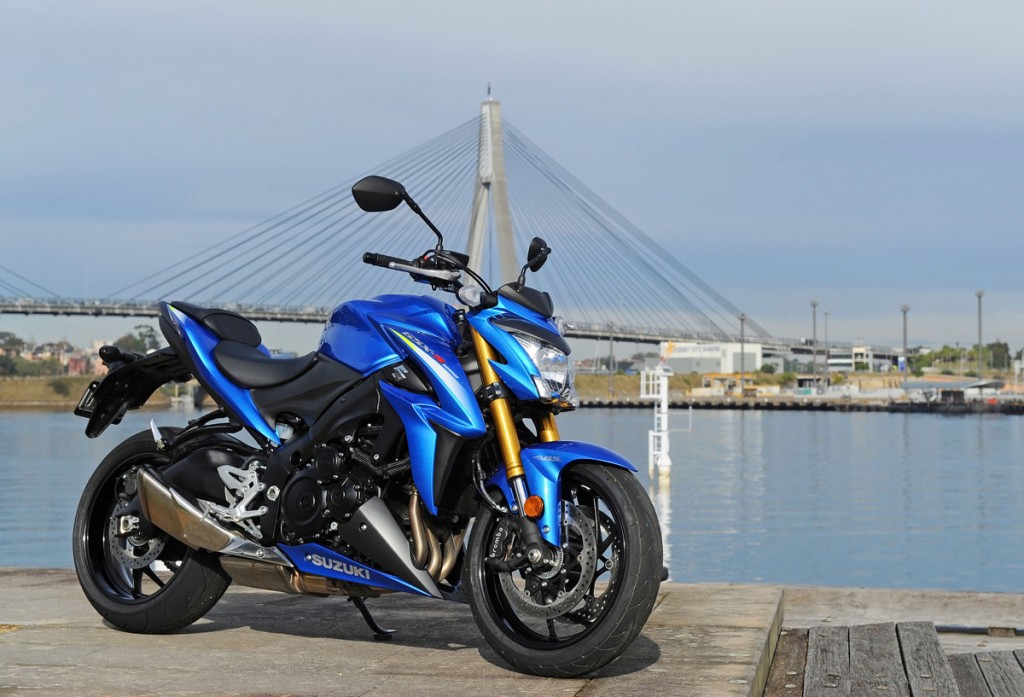 It was as the pace increased that the basic quality of the rear shock stood out. It faded very quickly over bumps, packing down and losing oil control. First job on my list as an owner would be a shock upgrade – as a priority. The front, however, is fantastic on the F and just needs some tweaks on the naked.
It was as the pace increased that the basic quality of the rear shock stood out. It faded very quickly over bumps, packing down and losing oil control. First job on my list as an owner would be a shock upgrade – as a priority. The front, however, is fantastic on the F and just needs some tweaks on the naked.
Both bikes have neutral yet accurate steering. They track through a turn very well and have decent ground clearance. My boots touch before the hero blobs, however, in Spain we had to remove the blobs and then we still ground the ‘pegs away, so on grippier tarmac here I see the same thing happening.
Brake control is spot on, both the rear for balancing the bike and the front for stopping. There is plenty of power yet the initial bite is more sports touring than sports, making braking easier and leaving the bike settled. I really do rate the Brembo brakes highly and the radial-pull master-cylinder ratio is spot on.
The OEM Dunlop D214 tyres offer good durability, wet weather grip, handling characteristics and dry grip but they do lack feel, so when time comes to replace the hoops I would try something sportier as a test.
The overall finish is typically good quality Suzuki, with deep paint for the metallic colours and quality welds, casting and machining.
With service intervals at 12,000km and valve clearances only due every 24,000km, the GSX-S1000 is going to be a good cost-effective long-term all-rounder for many happy Australian motorcyclists. The question is do you want fairings or the naked look?
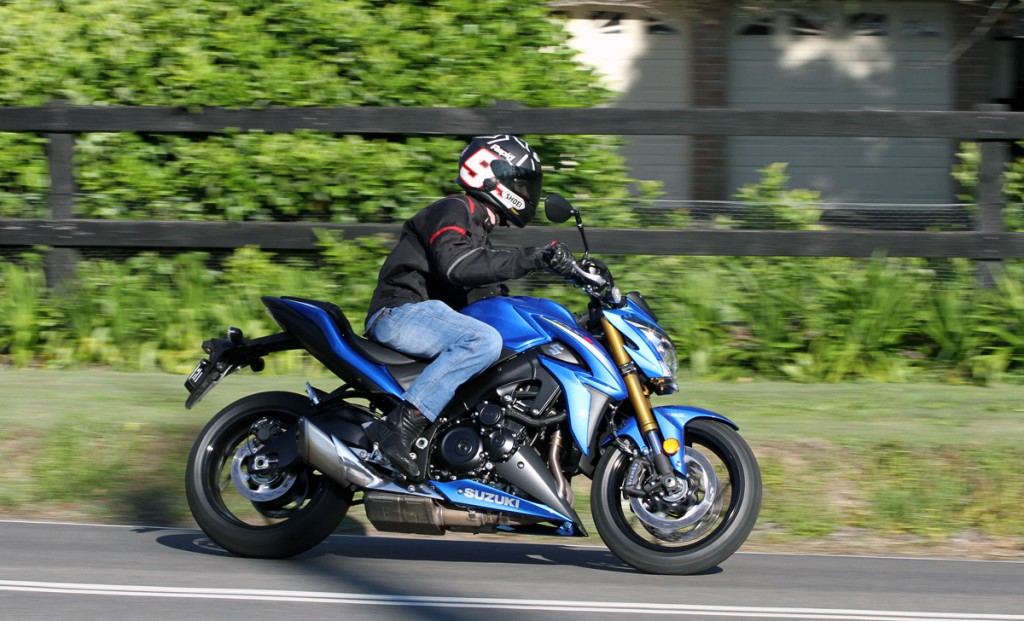
2015 Suzuki GSX-S1000 Second Opinion
From first setting eyes on the GSX-S1000 I was impressed, the bike is seriously mean and sexy looking and is a real testament to Suzuki getting serious about taking on the 1000cc nakedbike competition.
Having never ridden the original GSX-R1000K5 that the engine on the GSX-S came from – albeit retuned, I went in not knowing what to expect. What I found is a torque-ridden, well-fuelled and exceptionally fun engine powering this new nakedbike offering, with great low down throttle control and typically exceptional four-cylinder power.
The bike also feels small and light on board, with Renthal fat ‘bars a nice touch and complemented by simple easy to use controls, with traction control present just to add to the bike’s safety tally, as the bike is just so tractable it’s not something you would need to rely on.
The GSX-S is built to a price though, something I mainly recognised through the suspension, which is great around town and on really smooth surfaces, but which gets overwhelmed on the rear and loses performance during extended use. It’s not a deal breaker, but I’d expect to replace the shock if this was my bike.
Handling is also light and agile, and the bike is just too easy to throw around which makes for plenty of grins, especially when combined with that willing engine.On the move you’d almost think this was a 300cc bike, rather than a litre-bike, with the ergonomics and geometry of the bike both spot on for my riding style and 180cm frame.
Brembo brakes are also a nice touch – I don’t think you need Brembo plastered across your calipers for good braking performance, but when you see it, it’s a good indication that it’ll easily meet expectations, something that’s true on the GSX-S and with the optional coloured calipers would be a very cool feature!
I’m trying not to go on here but the GSX-S is a bike that really impressed me, it’s built to a competitive price but is an exceptional machine that is heaps of fun and looks great. With a bit of suspension work though I think the GSX-S could compete with anything as a super fun and rideable machine and the opportunity to mod this machine is tremendous. – Kris Hodgson
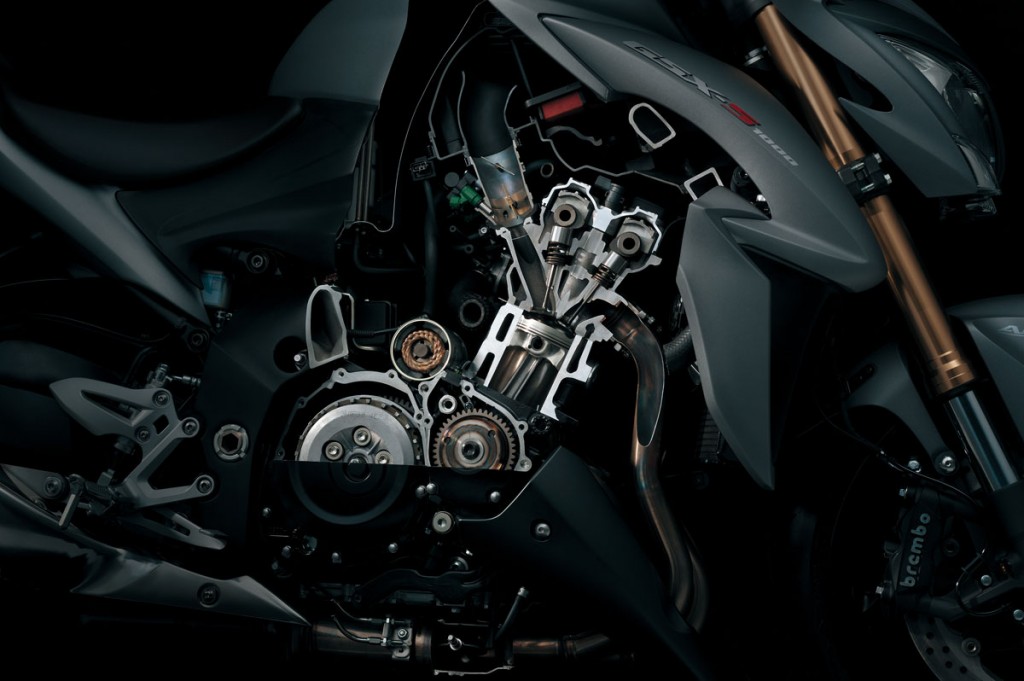
2015 Suzuki GSX-S1000 Engine
The GSX-S1000 powerplant has been refined and re-worked from the mighty K5 engine to compliment the new nakedbike. Basically, it is the same version of the 999cc 2005-2008 powerplant that got such a cult following, designed to give more acceleration and throttle response. The K5 engine was chosen as it has a long stroke for better mid range than the current GSX-R engine, because of its crank and gearbox layout permitting the desired frame design, and due to its proven reliability through multiple championships.
Bore and stroke remains 73.4 x 59mm, allowing for a compact combustion chamber and flat top pistons. This gives a broad spread of power throughout the rev range. The engine dimensions remain the same with cylinder pitch at 80mm and the same horizontally split crankcases and crank/input/output shaft layout. Cylinder angle is 23 degrees. There are some new parts – such as FEM (Finite Element Method) pistons that are three per cent lighter, helping with acceleration. The new camshafts are designed to optimize valve timing for the street, whereas the GSX-R1000 was tuned for the track. Iridium spark plugs heighten spark strength and therefore combustion efficiency, contributing to higher power, more linear throttle response, easier start-up and a more stable idle.
The cylinders are SCEM plated (Suzuki Composite Electrochemical Material) to improve heat transfer and durability. The compression ratio is 12.2:1 versus the GSX-R K5 ratio of 12.5:1 over the previous model’s (K4) 12.0:1. Valve size and port shape is unchanged.
The gearbox remains as per the GSX-R1000 and the back torque limiting clutch is also retained.
GSX-R1000 K7 44mm throttle-bodies are used, utilising the SDTV (Suzuki Dual Throttle Valve) system, where the secondary valves are servo controlled. The injectors are 10-hole long-nose units. The airbox is all-new, as is the exhaust system, which features equaliser pipes between cylinders one and four and, two and three. The catalytic converter is at the header collector box, which then joins the large volume exhaust chamber. The stubby muffler features a flapper valve, or SET (Suzuki Exhaust Tuning) system. Throttle position, gear position and engine rpm determine the opening of the servomotor driven valve, controlling pressure waves for optimum performance.
A highly efficient radiator keeps the engine cool, as does a newly designed liquid-cooled oil cooler.
2015 Suzuki GSX-S1000 Chassis
The chassis design brief was a tough one for the chassis engineer – it had to be good in city traffic, on highways, rural roads and twisty roads.
This was achieved with an all-new frame that is lighter than the GSX-R1000 frame. The frame was designed with FEM analysis technology and the main rail forms a straight line from the steering head to the swingarm pivot. The actual swingarm is straight off the current model GSX-R1000. Rake and trail figures are 25 and 100mm while seat height is just 815mm.
The forks are KYB fully adjustable 43mm inverted units with 120mm of stroke, while the shock is a link type unit with a 63mm stroke. It is adjustable for preload and rebound only.
The Brembo four-piston monoblock calipers have 32mm pistons and squeeze 310mm rotors. The calipers are the same as used on the current GSX-R1000. ABS is by Bosch.
The wheels are all-new six-spoke cast alloy units manufactured by TRP. The standard tyre is the Dunlop D214 with a 120/70 – 17(f) and 190/50 – 17(r).
The standard handlebar is a Renthal Fatbar, which is aluminium and very rigid. This is good for drops as well as reduced vibration.
2015 Suzuki GSX-S1000 Electronics
The GSX-S1000 is not a super high-tech bike but it has just the right amount of electronics that you don’t need a degree in software engineering to understand the system. It’s really, really easy to use, which I found fantastic.
There are three traction control settings to choose from as well as ‘Off’. It’s a very easy system that is operated by a left ‘bar toggle switch, with the level displayed on the dash.The TC system monitors front and rear wheel speeds, throttle position, crank position and gear position 250 times per second and quickly reduces power output when spin at the rear wheel is detected.
Engine output is managed by ignition timing and air delivery to ensure smooth operation. Mode 1 is the lowest sensitivity level allowing a certain level of wheelspin, suitable for fast sports riding in dry conditions. Mode 2 is the second lowest setting and activates earlier – it is for normal riding conditions and is the mode I used most during the test.Mode 3 is for wet or cold conditions.
The ABS control unit is supplied by Bosch and weighs just 640 grams. It monitors front and rear wheel speed 50-times per wheel rotation and matches stopping power to available traction. I tested the system purposely in many conditions and found it fantastic.
The LCD instrument cluster is packed with features and weighs just 275 grams. It includes speedo, tacho, odo, dual trip meters, gear position, water temperature, range, fuel consumption average and instant, traction control mode and fuel gauge – plus a clock.The GSX-S also features a one-press starter button (no need to hold it down) and you don’t have to hold the clutch in to start the bike.
2015 Suzuki GSX-S1000 Styling
A wild, bold and aggressive look was the brief for designer Shinji Tamura – with the look of a crouching beast, not a Transformer or Manga styling… With a target rider above the age of 40, a touch of class and style also had to go into the design process.
The headlight, a multi-reflector type with 60/55w bulb, has two LED lights positioned under it to give a ‘fang’ effect, while the rear end has an LED taillight with a double lens to add some style and class, according to Tamura-San.
The belly-pan is designed to have sharp lines and surfaces that connect dynamically to the tail section when viewed from the side, while the radiator shrouds are designed to emphasize a more dynamic and fierce side to the bike – as well as actually doing their job of directing airflow for cooling and rider comfort. Smart use of black plastics and painted surfaces gives the tail unit a very sharp and clean look and the short tail section gives a streetfighter touch to the bike.
The stubby muffler adds to the aggressive look to the rear of the bike, as do the sportsbike style seats. Pillion comfort was not a priority as the target rider is a weekend quick blaster who rarely does long trips or takes pillions…
2015 Suzuki GSX-S1000 Accessories
The GSX-S1000 is built to be customised and Suzuki have recognised this by releasing a range of accessories for owners to personalise their new bike. We won’t get the Yoshimura muffler here in Australia, due to ADRs, however the rest of the accessories will be available through your local Suzuki dealer. Visit suzukimotorcycles.com.au for more info.
2015 Suzuki GSX-S1000 Concept
Suzuki has arrived late to the nakedbike sports class, however, they sure have done their research and that shows in the product they have delivered.
The GSX-S is aimed at the experienced rider who has previously owned sportsbikes, who rides mainly on weekends for a quick fun spin up the mountain and does not want a full-blown sportsbike anymore.
Key factors were that the bike had to be lightweight, nimble handling, agile, have strong acceleration and be good quality and stylish. Top speed and outright power were not concerns. The bike had to have an exciting exhaust and intake sound, sportsbike brakes, be fun to look at and admire in the garage, have strong top-end and traction control and ABS. Importantly, Suzuki wanted ‘No Gimmicks’ on the bike, as they said, they are targeting experienced riders who know their stuff…
 2015 Suzuki GSX-S1000 ABS (F) Specifications
2015 Suzuki GSX-S1000 ABS (F) Specifications
WARRANTY: Two-year/unlimited kilometre
COLOURS: Mat Fibroin Grey, Sparkle Black/Candy Daring Red, Metallic Triton Blue
CLAIMED POWER: 107kW[146hp]@10,000rpm
CLAIMED TORQUE: 106Nm[80ft-lbsft-lbs]@9500rpm
CLAIMED WET WEIGHT: 209kg (214kg)
FUEL CAPACITY: 17L
ENGINE: Liquid-cooled, four-stroke, forward-inclined parallel four-cylinder, four-valve per cylinder, DOHC, 73.4 x 59mm bore x stroke, 999cc, 12.1:1 compression, FEM pistons, 43mm throttle-bodies, 10-hole long-nose fuel injectors, water-cooled oil-cooler, SCEM plated cylinders, SET exhaust system
GEARBOX: Constant mesh, six-speed
CLUTCH: Back-torque limiter wet multi-plate
CHASSIS: FEM designed alloy frame, alloy braced swingarm
SUSPENSION: 43mm KYB fully adjustable telescopic forks, 120mm travel, KYB rear shock, link type single shock, rebound and preload adjustment, N/A travel
BRAKES: Bosch ABS system, Brembo radial-mount 32mm four-piston calipers, 310mm semi-floating stainless steel rotors, 220mm rear rotor with Nissin caliper, Nissin conventional master-cylinder
WHEELS & TYRES: Cast alloy six-spoke 17in, Dunlop D214 120/70-17in (f), 190/50-17(r)
DIMENSIONS:
Seat height: 815mm
Overall height: 1080mm (1180mm)
Overall length: 2115mm
Width: 795mm
Wheelbase: 1460mm
INSTRUMENTS: Multi-function LCD display
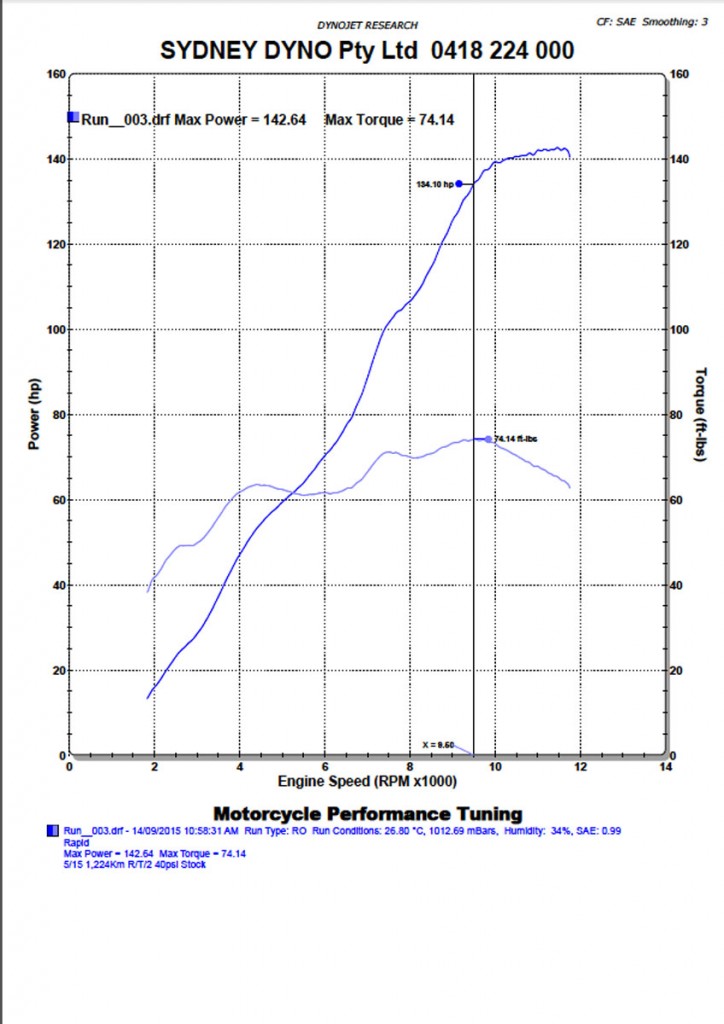
2015 Suzuki GSX-S1000 Gallery
The Verdict | Review: 2015 Suzuki GSX-S1000
Hooning
Great value, top fun, loads of grunt…


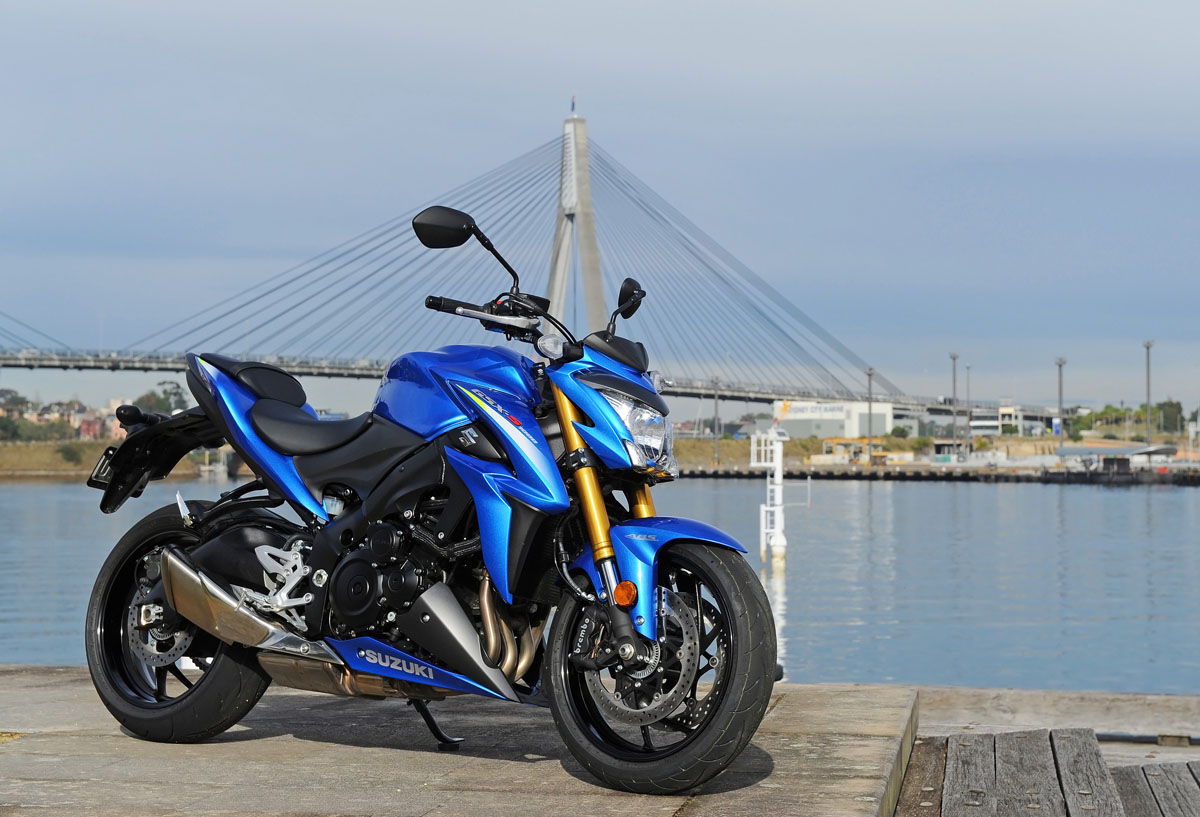
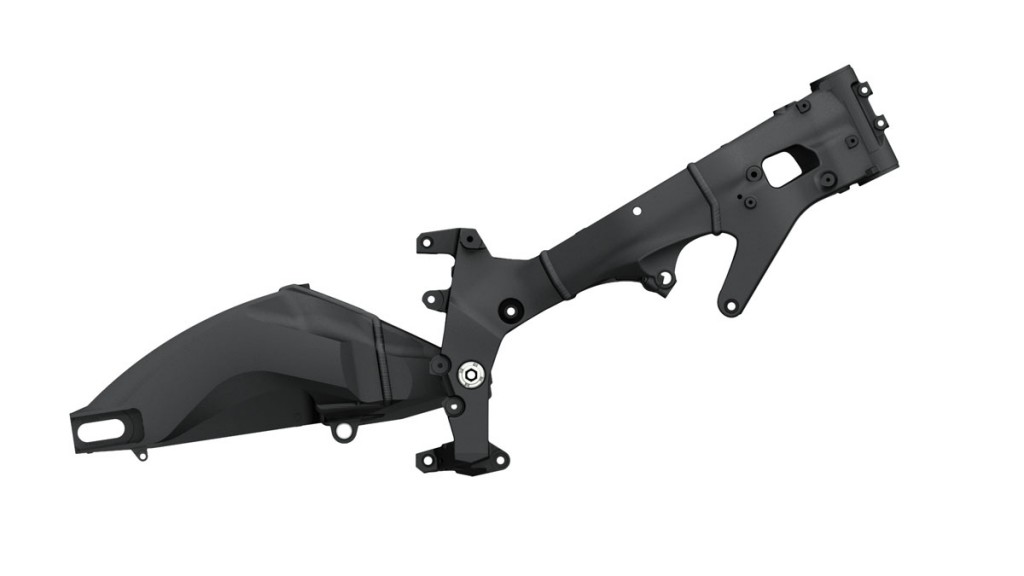
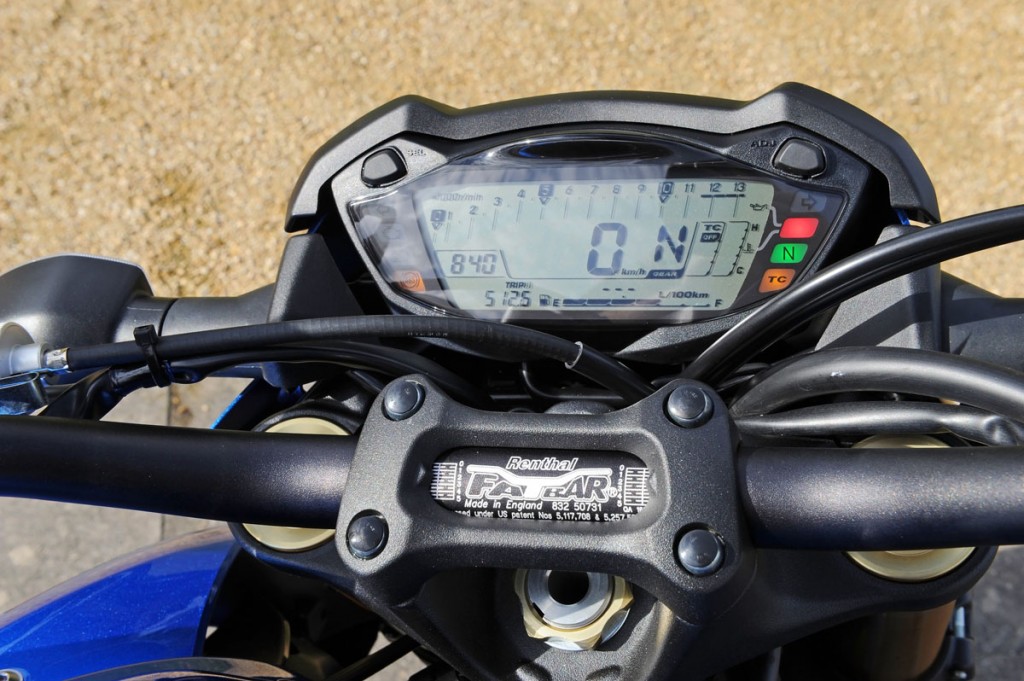
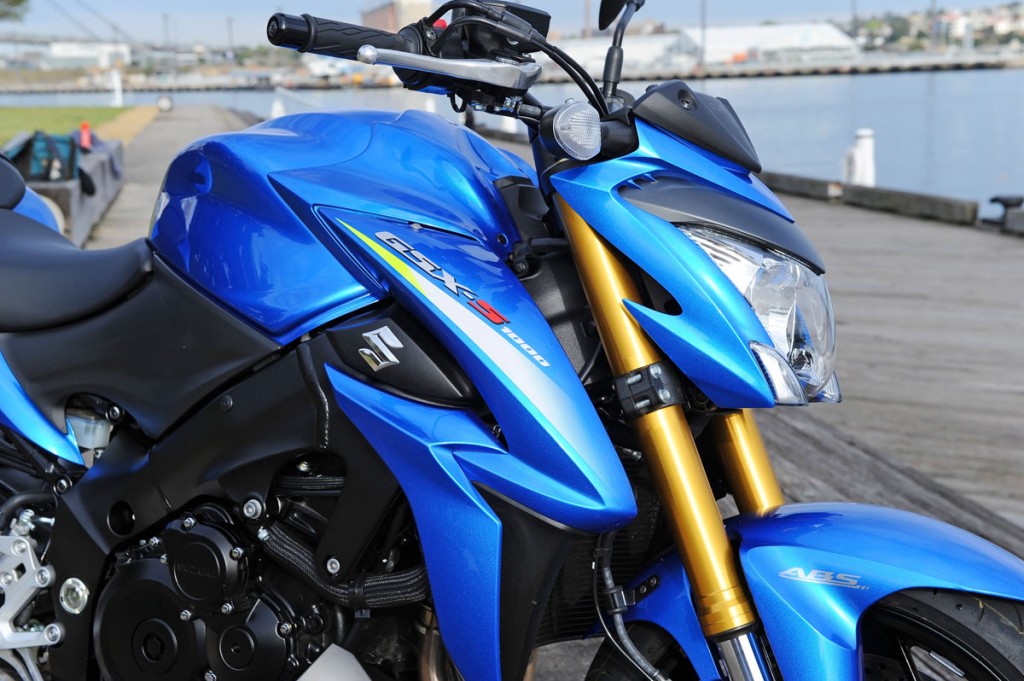
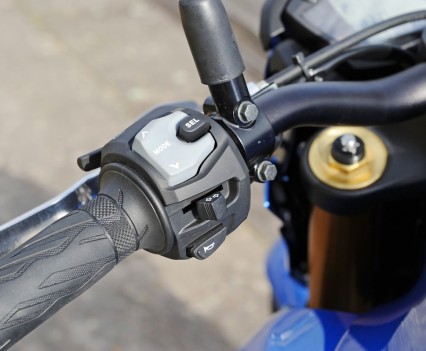
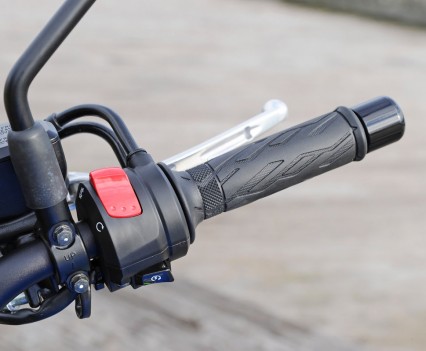
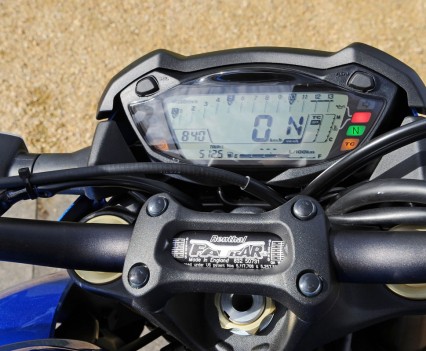
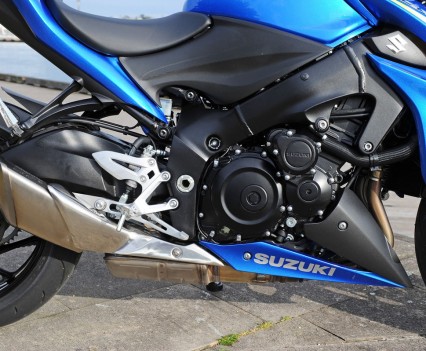
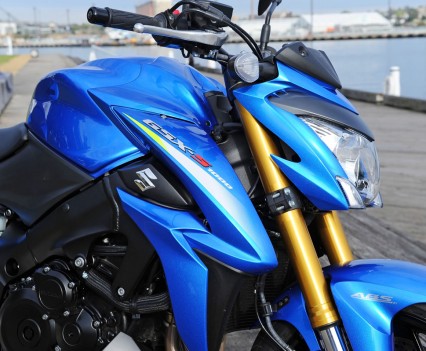
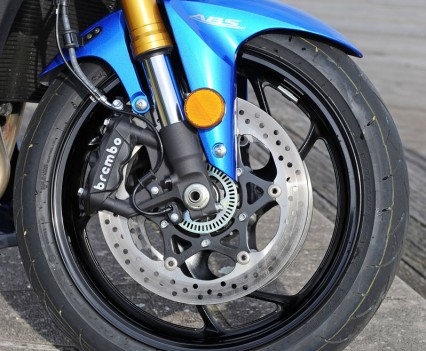
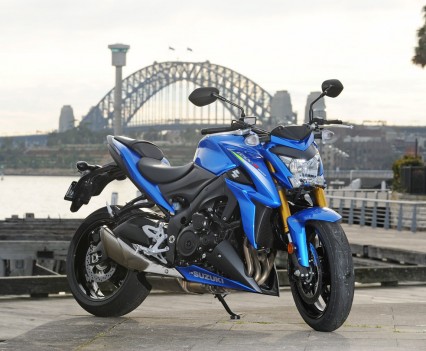
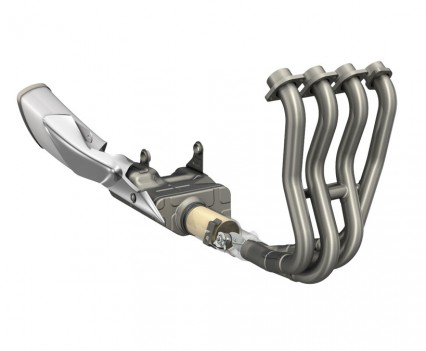
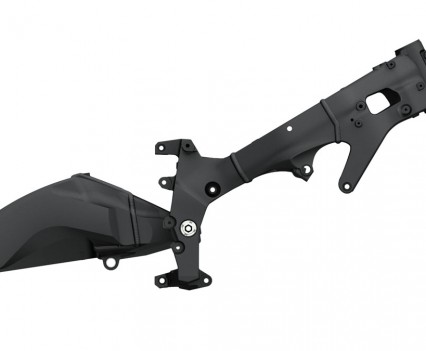
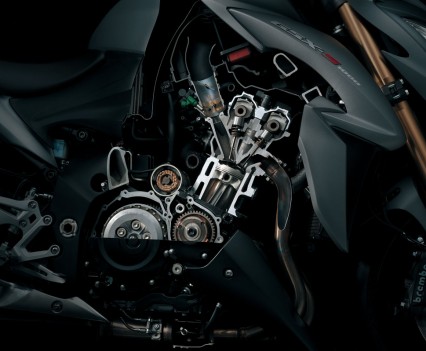
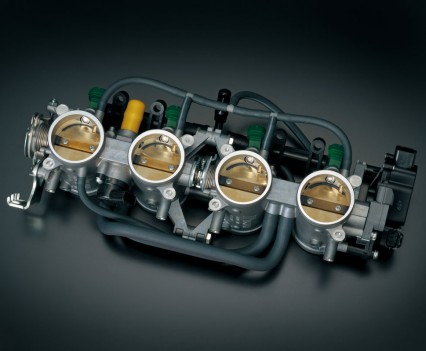
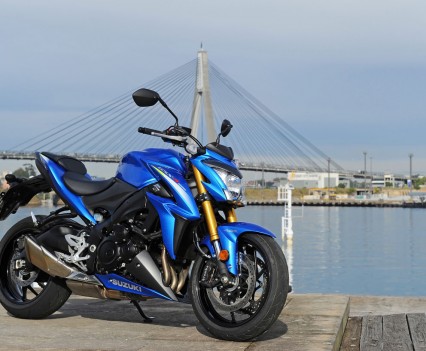
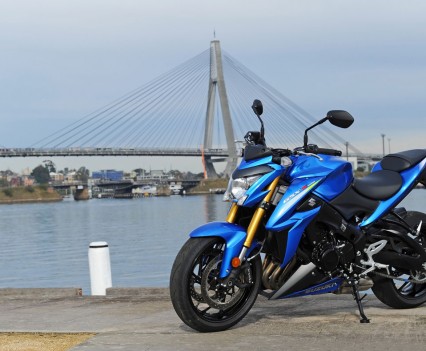
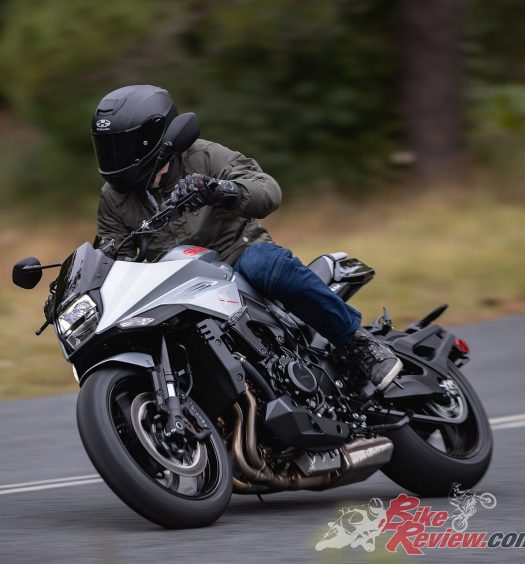
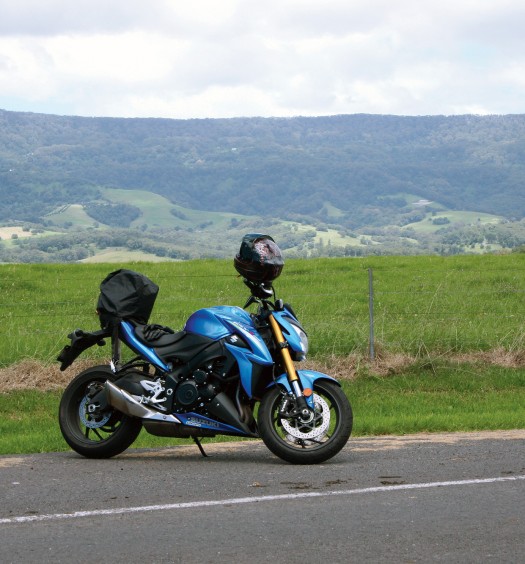




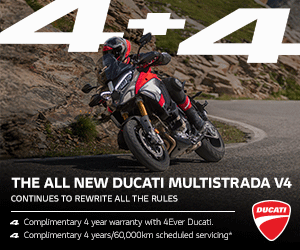
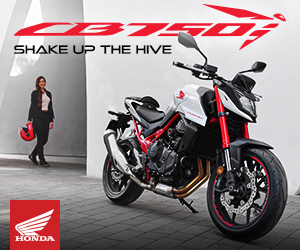








December 4, 2015
A great review Jeff, I have been looking at the F as a replacement for my old Bandit. Cheers
December 23, 2015
A great review, very informative and I can’t wait to buy one in 2016
December 27, 2015
Was hoping for more informative technical specifications , insight to video detail instead of second or third gear shifts up a hill , I have a 1992 GSX1100G SUZUKI shaft drive and I cant help thinking how this bike rides smoother, faster and the engine, s exhaust note’ superior and more raunchy than this 2015 model in this short video clip ..Cheers lets all hope for some genuine new developments on all future and beyond 2016 model ..motorcycles. fitzy 🙂
January 6, 2016
Hi Mark,
The old GSX1100G were a good thing, smooth and torquey not to mention comfortable and quick. The new GSX-S1000 more a sportsbike – for those who once had a GSX-R1000 and now want an upright riding position. The tech specification breakouts I wrote on Engine, Electronics, Chassis, Styling and so forth include all information I could get from Suzuki at the World Launch I attended in Spain earlier in the year. There is not a lot else to tell, as there are not many changes to the K5 engine. Yes, sorry about the video – I’m a bit slack at getting with the program there but I will improve! Jeff.
February 5, 2017
Gee Mark you can tell all that from a video? Imagine how much you would learn from a test ride. Don’t ever take a test ride of a modern bike, like I did, because it makes you realise how far behind those old bikes we love are from the real world of whats happening NOW.
March 17, 2018
Why all the knee dragging in the video ?
Got the S version from 2015